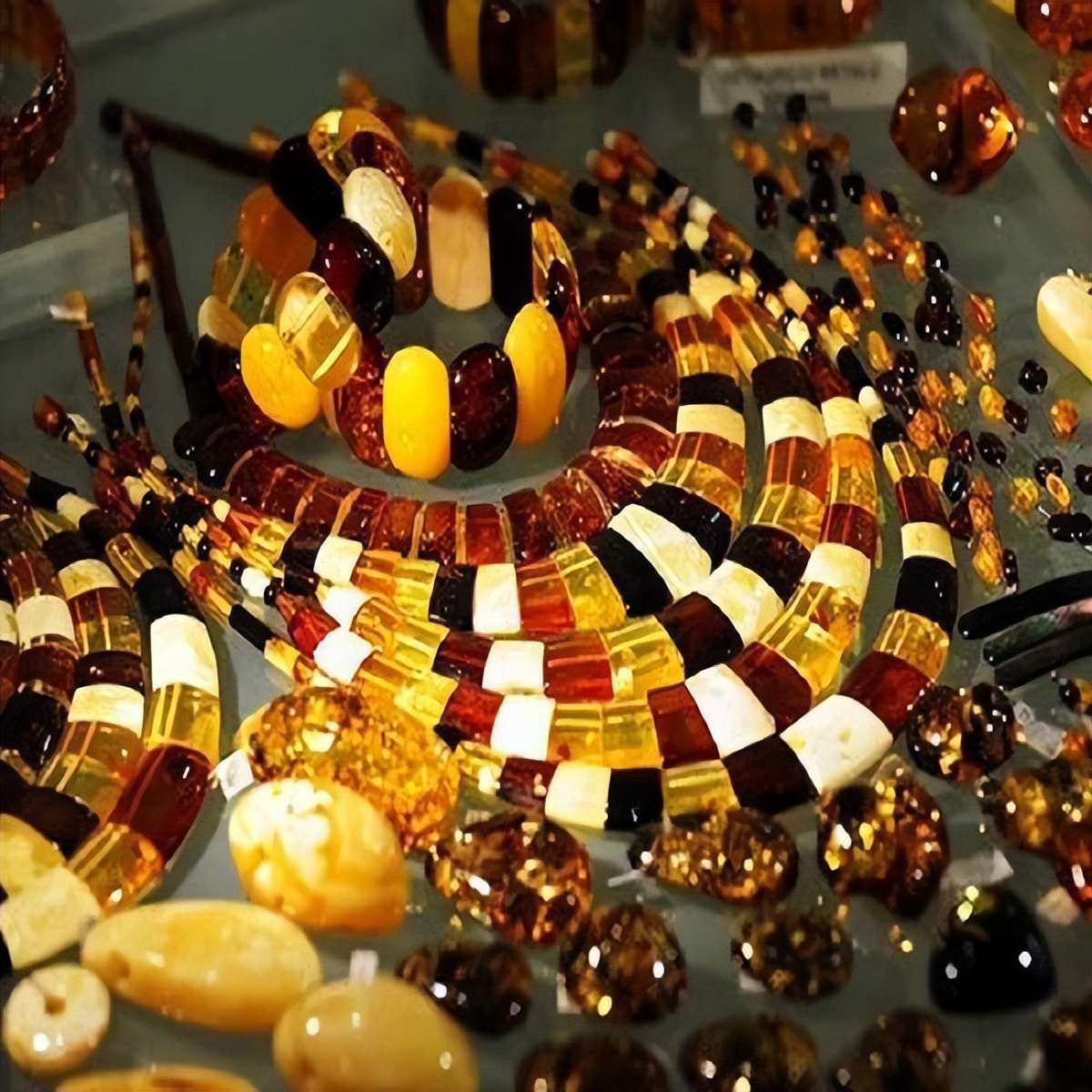About 40 million years ago, the Baltic Sea also had large tracts of land and pine forests. As the temperature rises, pine resin is secreted in large quantities, while the glaciers of the surrounding highlands melt, wrapped in debris flowing into the area, gradually forming a vast ocean. The pine resin that sinks to the bottom of the sea as the forest hardens into a dense belt of amber fossils, becoming a natural gift to the countries along the coast, of which Lithuania is the biggest beneficiary.

Lithuanian amber
Many people's impression of Lithuania is still stuck in basketball, as well as Sabonis and Yunas, until some time ago, it and the bay of the eyebrows to successfully attract everyone's attention. The less present people often want to attract the attention of others, and Lithuania is such a presence. It's like a bowl, it's not good to lie down, but it has to stand up.
Lithuania also produces pottery
Lithuania is now the same size as our Ningxia Autonomous Region, but once upon a time, it was also once a wide area.
The first unified state in Lithuanian history, called the Grand Duchy of Lithuania, began in the 13th century, when the Lithuanian nation, which was dominated by the Nordic race, was formed. After decades of civil strife over power and profit, the Grand Duchy of Lithuania continued to expand into kievan rus' homelands and other Slavic lands to the west. By the end of the 14th century, the territory covered present-day Lithuania, Latvia, Ukraine, Belarus, as well as parts of Estonia, Poland, Moldova, and Russia.
Once Lithuania and Poland
Entering the 15th century, the Grand Duchy of Moscow, freed from the rule of the Golden Horde, gradually became stronger and expanded westward, and conflict with the Grand Duchy of Lithuania was inevitable. At the end of the 15th century, Ivan III won the Battle of Vidrosha, recovering the Kievan Rus' homeland and forcing Lithuania and Poland to unite. In 1569, during the war with Ivan IV over Latvia, the Polish-Lithuanian Commonwealth was formed. After 25 years, although the Polish-Lithuanian Federation finally won the Latvian War, it was followed by continuous wars with Russia and Sweden, which was seriously damaged and the land was getting smaller and smaller. In 1795, the Polish-Lithuanian Commonwealth collapsed, and most of the territory of the former Grand Duchy of Lithuania was owned by Tsarist Russia.
Trakai Castle was once the residence of the Grand Duke of Lithuania
For most of the 20th century, Lithuania had a history of not having a presence:
Occupied by Germany at the beginning of World War I, independence was declared in February 1918, a bourgeois republic was established, and Soviet power was established after the end of World War I.
In February 1919, it was jointly established with Belarus to form the "Libai" Soviet Socialist Republic, which became a bourgeois republic in August of the same year and declared its independence again.
In September 1926, a non-aggression pact was signed with the Soviet Union, which was occupied by the Soviet Union in 1940. After the outbreak of the Soviet-German War in 1941, it was occupied by Germany.
The capital Vilnius attractions the Catholic Cathedral
In 1944, the Soviet Union again occupied Lithuania and established the Lithuanian Soviet Socialist Republic, which was incorporated into the Soviet Union. At the same time, the history of the German occupation period is liquidated.
It was not until March 11, 1990, that Lithuania was the first of the Soviet unions to declare independence, and a year and a half later was forced to be recognized by the Soviet Union.
Lithuania and neighboring countries
To be sure, lithuania's history has been ill-fated. After independence from the Soviet Union, with the foundation of the richest member state of the former Soviet Union, with a high level of information service and manufacturing, and with amber, pottery, beer and other specialties, it was possible to develop economic trade well. However, Lithuania, which fully embraces the West, is always anxious to show something. Looking around the entire Western world, France and Germany are still worth holding. So what Big Brother America supports, I immediately support what; What Big Brother America opposes, I immediately oppose. What Russian energy, don't anymore. What "Belt and Road", cross-regional cooperation, withdrew. As long as the American masters are happy, they completely disregard the domestic economy and people's livelihood. In 2020, the Lithuanian economy shrank by 9.7%. In March 2022, Lithuania's inflation rate reached 15%, the largest of the entire European Union.
Beer is also a Lithuanian specialty
It is said that 90% of the world's high-quality amber is produced in Lithuania and Kaliningrad, is it not that this time, this upright bowl has to deduct so many shares into its own bowl? It doesn't matter if you're a pawn or looking for a sense of presence, just be careful not to cei your own bowl.